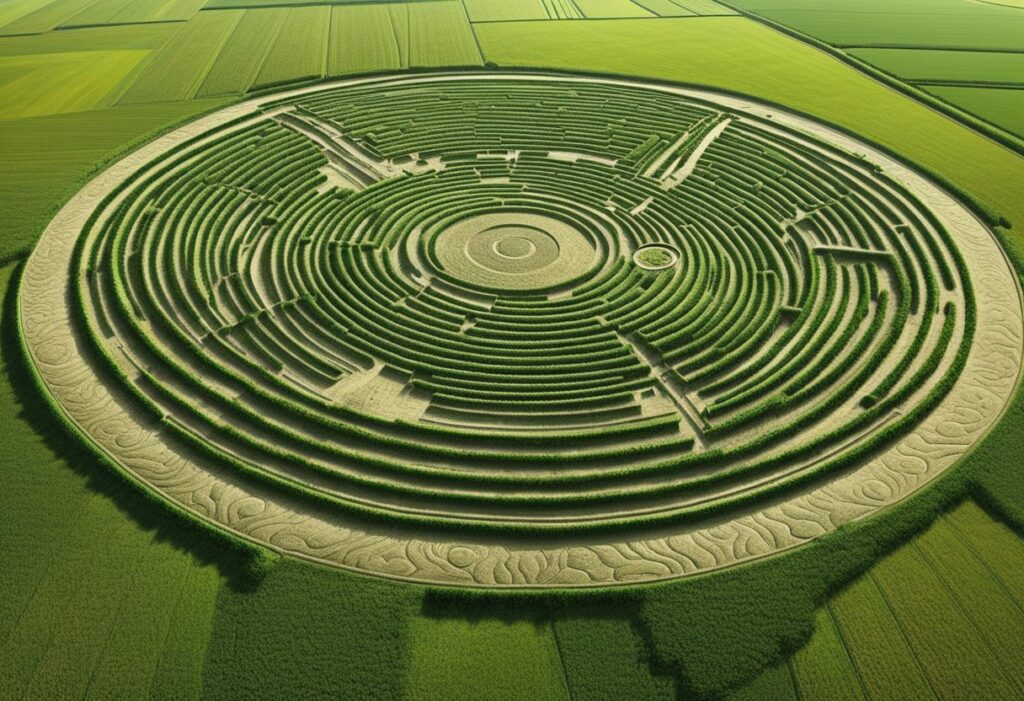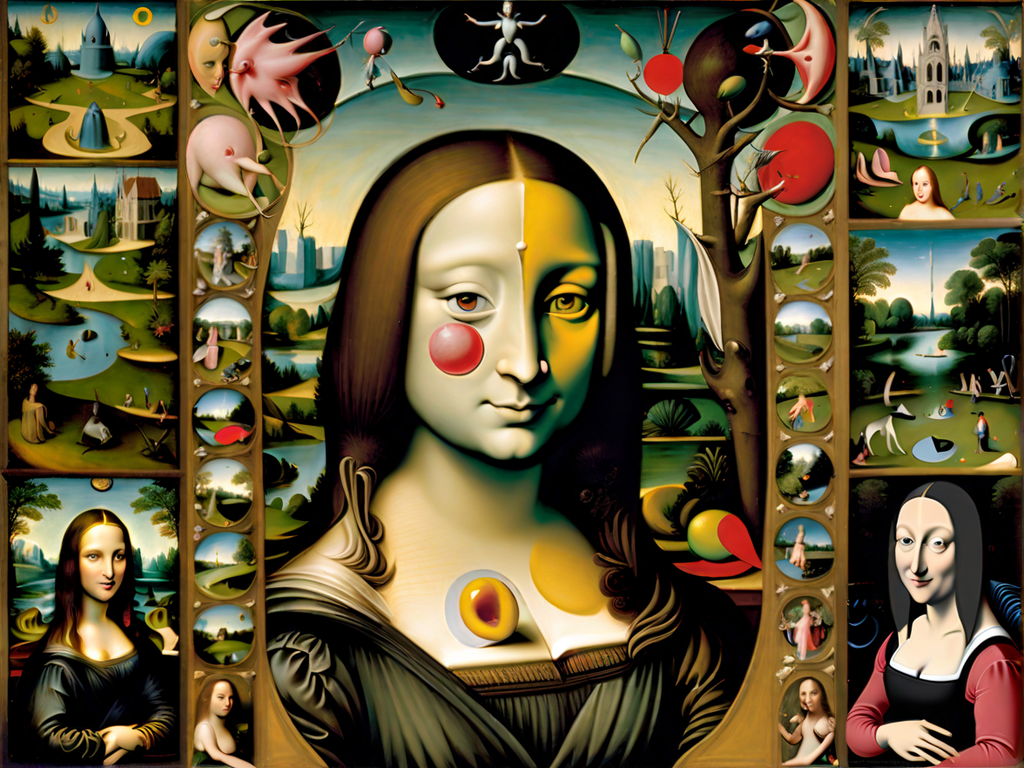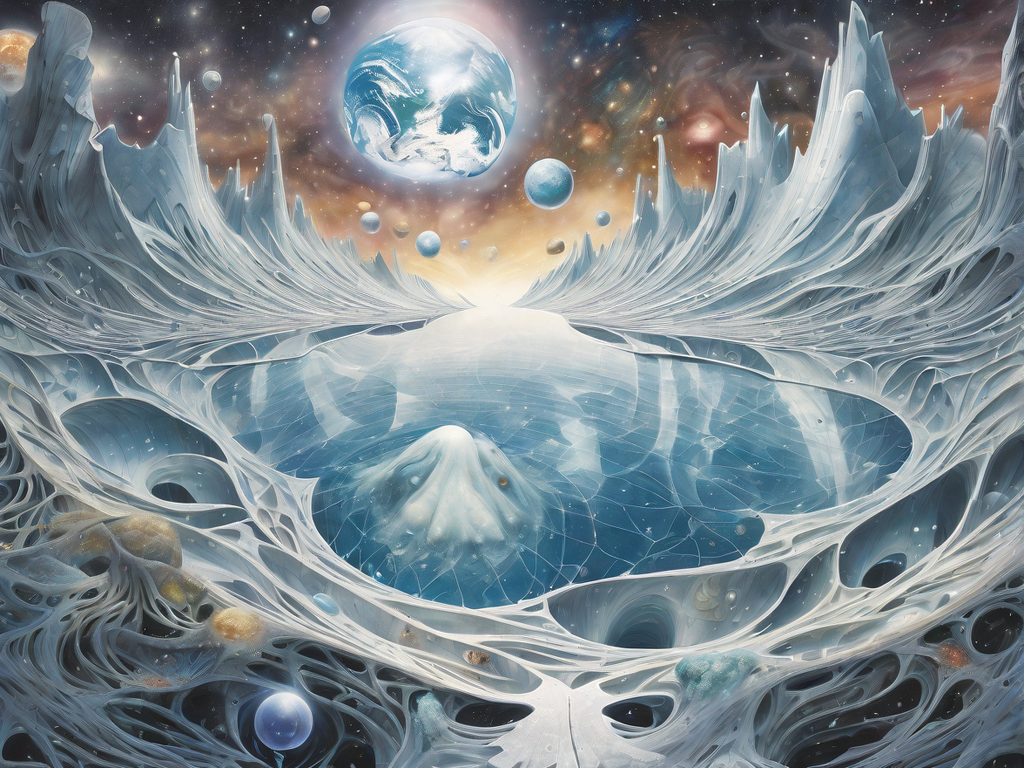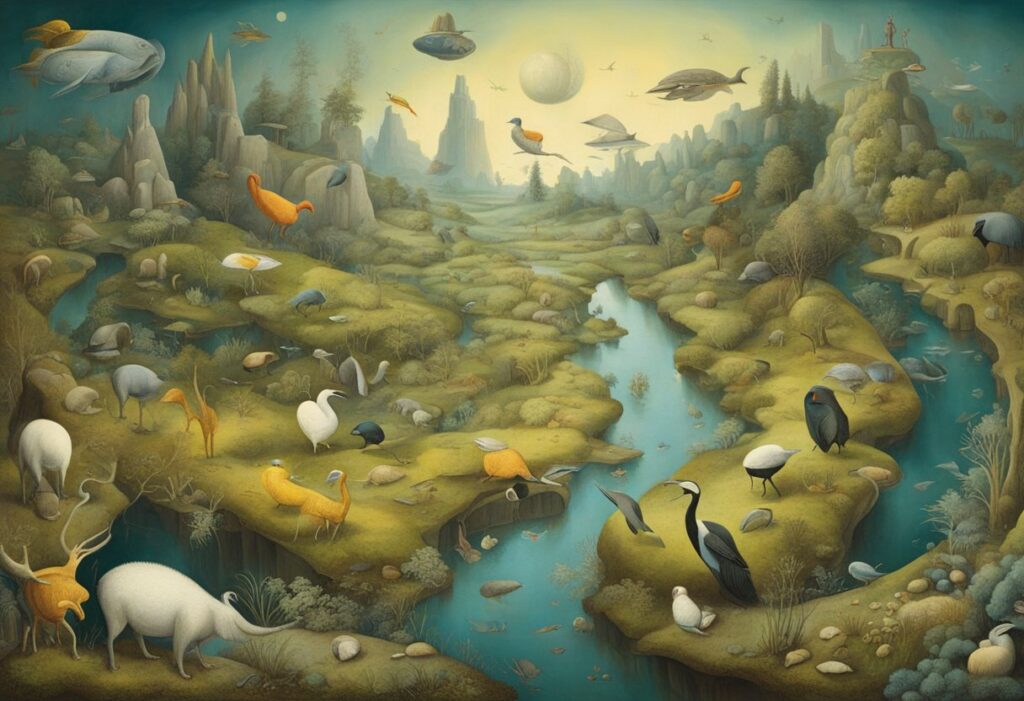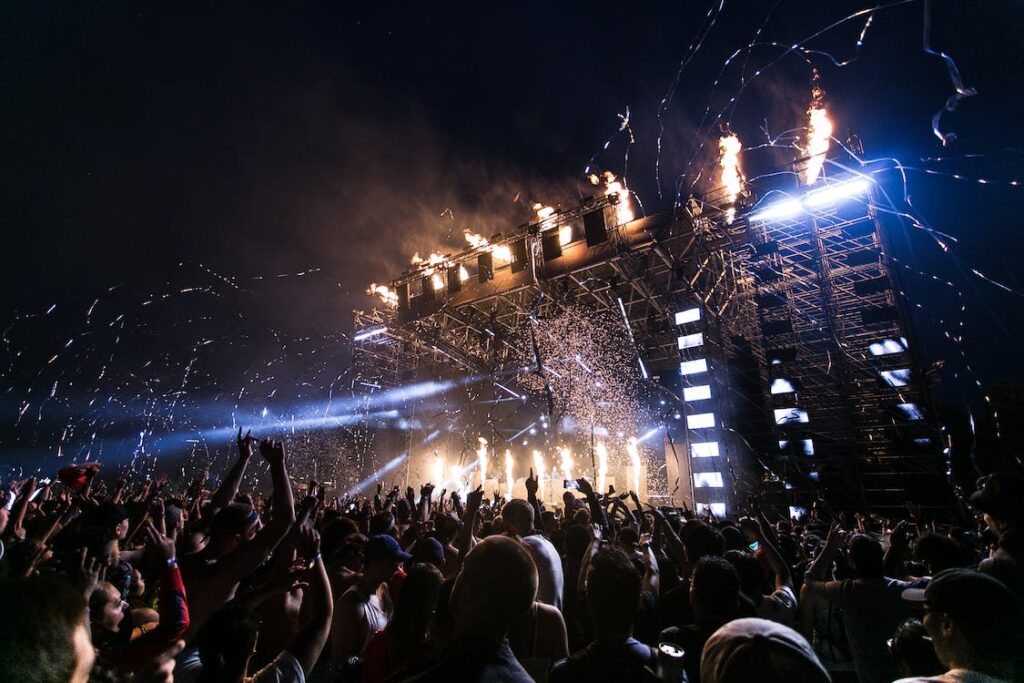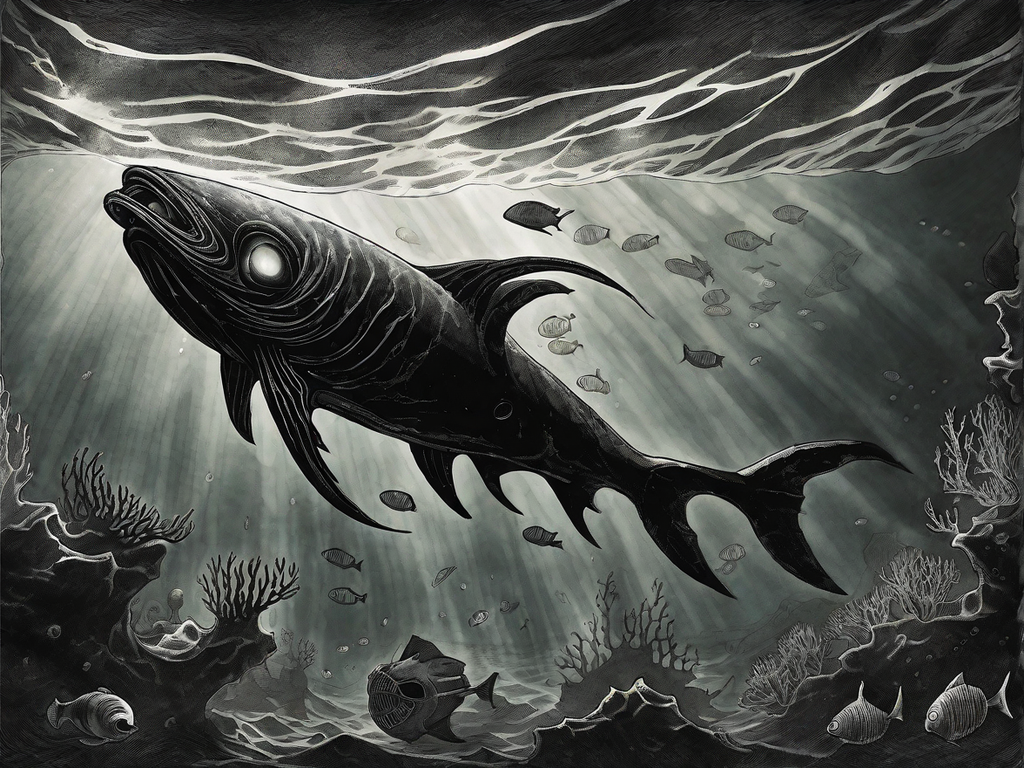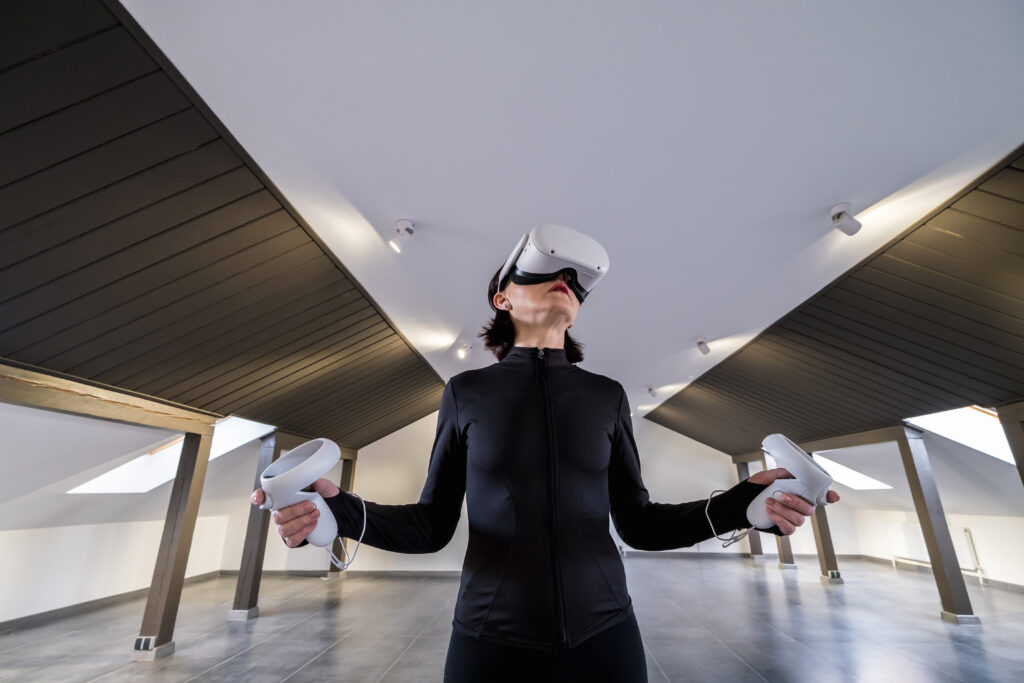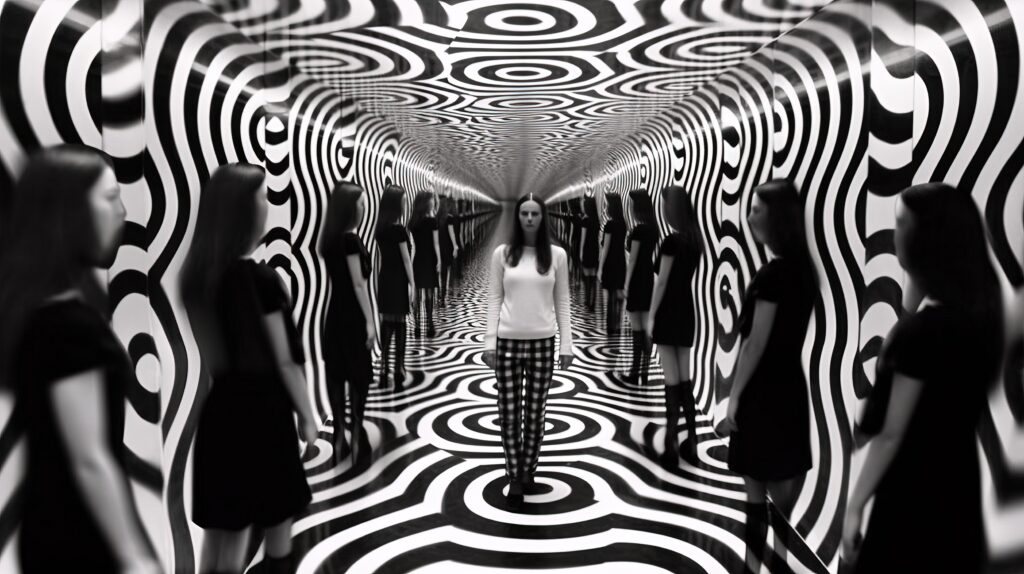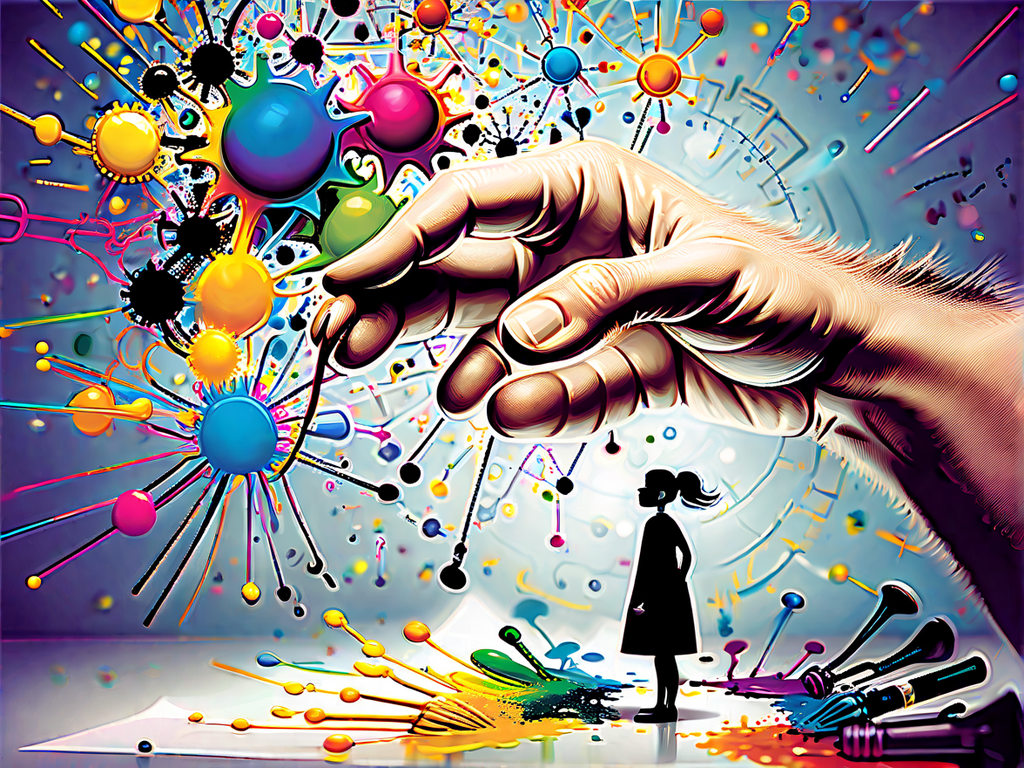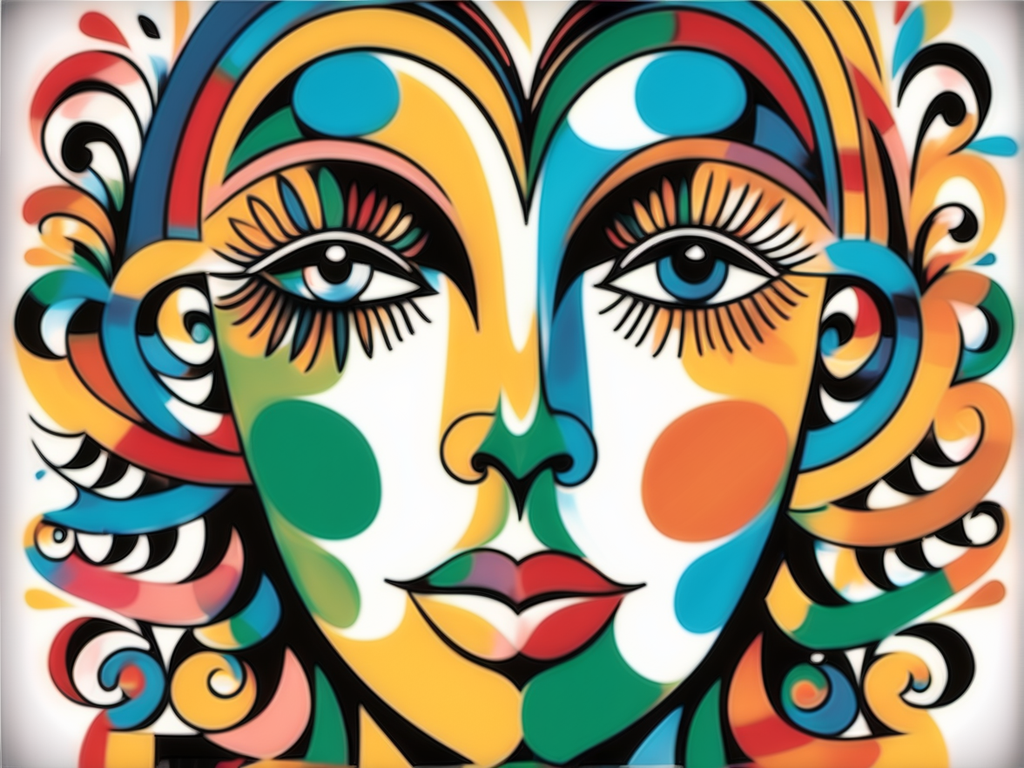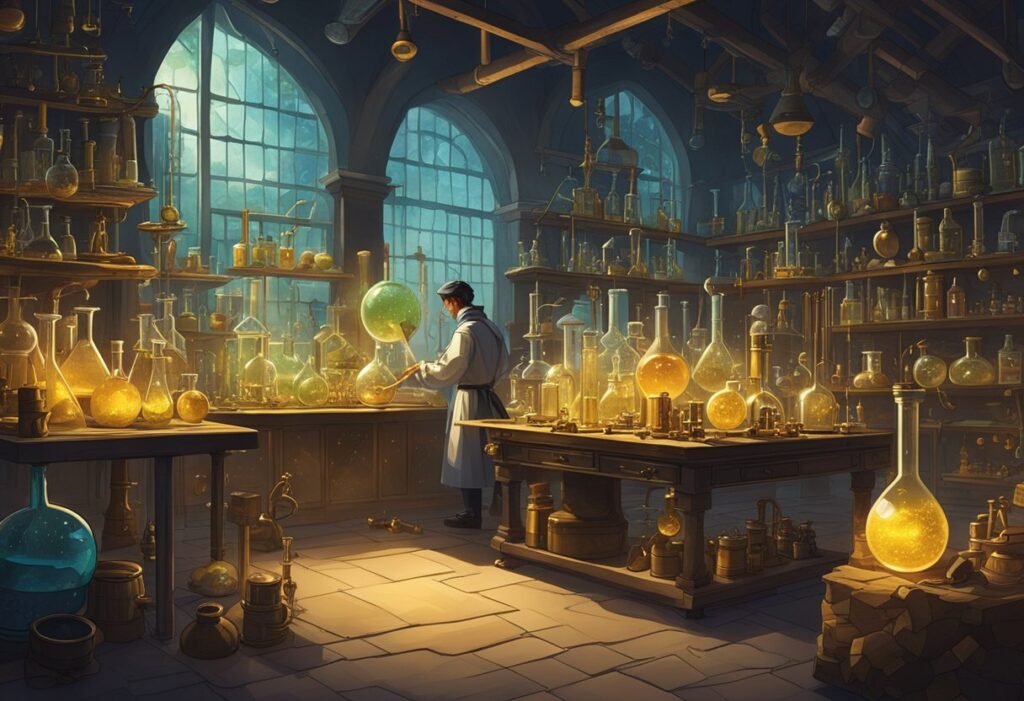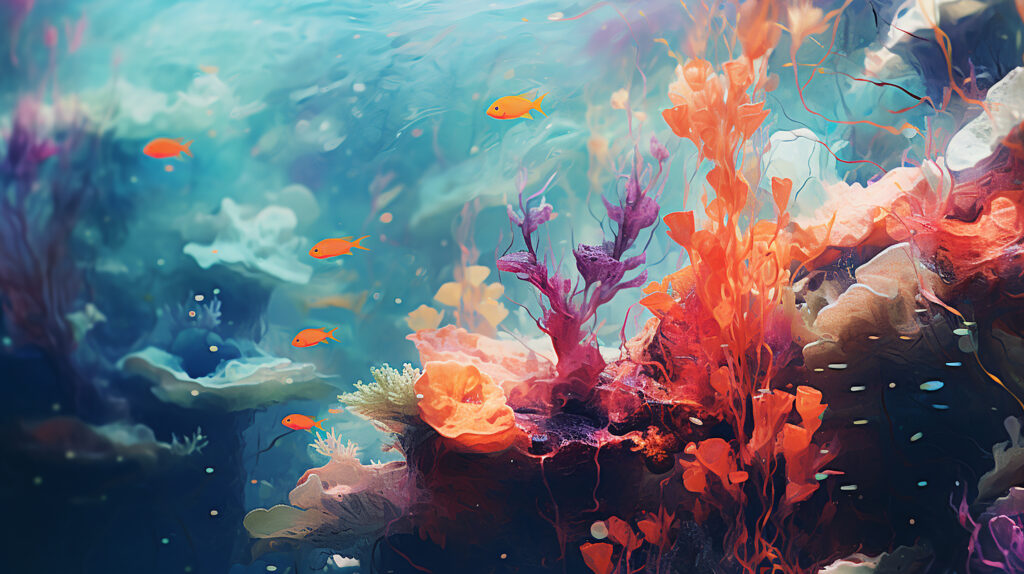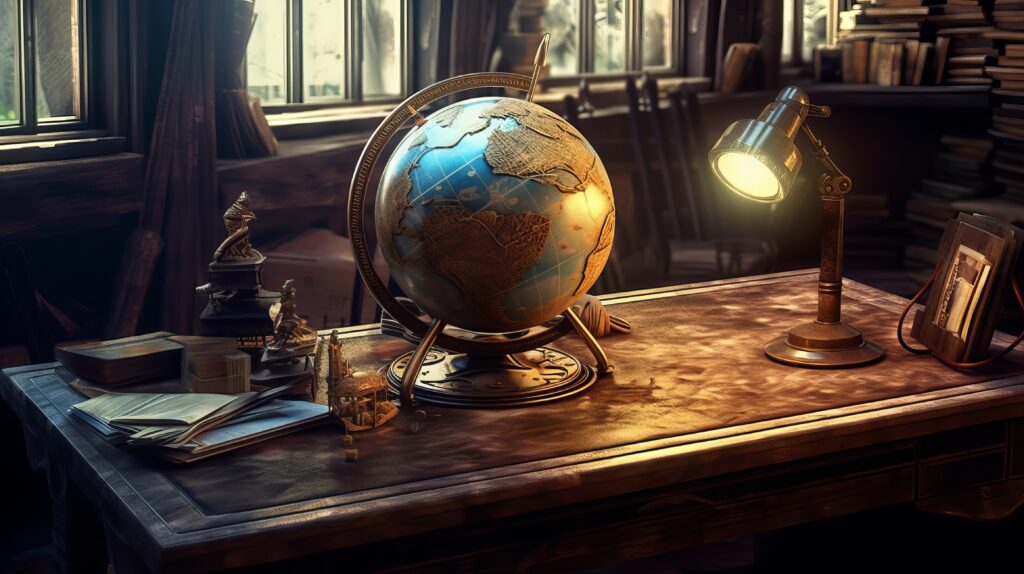Welcome to a journey into the unknown, where we explore the mind-bending concept of parallel universes. Have you ever wondered if there could be an alternate version of yourself existing in another realm? Brace yourself as we dive deep into the mysteries of parallel universes and challenge your perceptions of reality.
Key Takeaways:
- Parallel universes present the possibility of alternate versions of ourselves.
- Scientific theories, such as the many-worlds interpretation and the multiverse theory, support the existence of parallel universes.
- Wormholes and the concept of a multiverse suggest interconnected realities where parallel universes coexist.
- Theories like the multiverse theory offer a framework for understanding the possibilities of other realms.
- Literature and popular culture have played a significant role in shaping our perceptions of parallel universes.
Understanding Parallel Universes
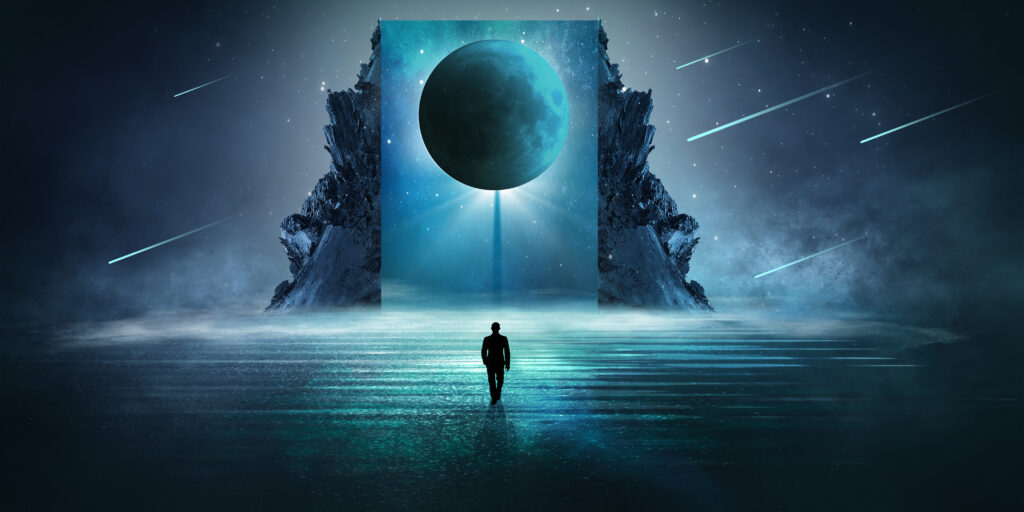
When pondering the mind-bending concept of parallel universes, it is essential to establish a comprehensive understanding of this fascinating phenomenon. Parallel universes, also known as alternate dimensions or other realms, are hypothetical realities that exist alongside our own. These extraordinary concepts have captured the attention of both scientists and science fiction enthusiasts, igniting the imagination and challenging our perception of reality.
“The idea that our universe is just one of many has been a subject of intrigue for centuries, with numerous scientific theories offering possible explanations.”
One key element in comprehending the concept of parallel universes is the notion of multiple dimensions. The existence of multiple dimensions suggests that our reality is part of a larger cosmic framework, where other dimensions with different physical laws and properties coexist. These dimensions can be visualized as layers, each with its unique set of rules governing the behavior of matter and energy.
Scientific theories provide a foundation for exploring the existence of parallel universes. These theories derive from various branches of science, including quantum physics, cosmology, and string theory. By combining empirical evidence, mathematical models, and rigorous experimentation, scientists strive to unravel the mysteries of the universe and shed light on the enigmatic concept of parallel universes.
| Theories | Description |
|---|---|
| Many-worlds interpretation | The many-worlds interpretation, proposed by Hugh Everett, is a quantum physics theory stating that for every decision or event, the universe splits into parallel branches, each representing a different outcome. This theory implies the existence of countless parallel universes, each following a different path of events. |
| Multiverse theory | The multiverse theory suggests the existence of a vast cosmic ensemble of parallel universes, each with its unique set of physical laws and properties. It is closely linked to string theory, a branch of theoretical physics that seeks to unify quantum mechanics and general relativity. |
| Branes | In the brane theory, parallel universes are conceptualized as membranes (branes) floating in a higher-dimensional space. Interactions between these branes could explain the forces and phenomena observed in our own universe. |
The Many-worlds Interpretation
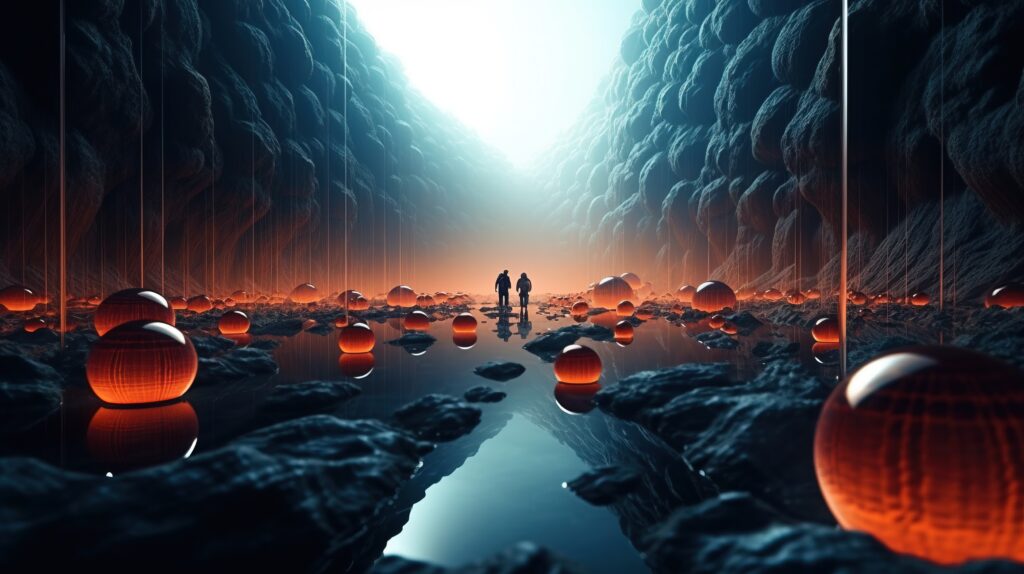
When it comes to understanding the mysteries of parallel universes, one theory stands out among the rest: the Many-worlds Interpretation. Proposed by physicist Hugh Everett, this groundbreaking theory utilizes principles of quantum physics to propose the existence of countless parallel universes.
In the Many-worlds Interpretation, every possible outcome of an event exists in its own separate universe. This means that for every decision you make, there is another universe in which you made a different choice. This theory suggests that our reality is just one branch among an infinite number of parallel realities.
So how does quantum physics come into play? According to this interpretation, quantum superposition allows multiple states to coexist simultaneously. This means that before an observation is made, objects can exist in multiple states at once. Once an observation is made, the universe splits into multiple branches, each representing a different possible outcome.
“The Many-worlds Interpretation suggests that our reality is just one branch among an infinite number of parallel realities.”
Imagine a coin flip: in our reality, it lands on either heads or tails. However, in a parallel universe, that same coin flip could have resulted in an entirely different outcome. In this way, the Many-worlds Interpretation proposes that every possible outcome of every event actually happens, just in different universes.
This theory has profound implications for our understanding of reality, challenging our perceptions of cause and effect. It suggests that every possible choice and every possible outcome exists, creating a mind-bogglingly vast multiverse. The Many-worlds Interpretation forces us to consider the infinite possibilities that exist beyond our own limited experience.
Quantum Physics and the Many-worlds Interpretation
At the heart of the Many-worlds Interpretation lies the field of quantum physics. Quantum physics is a branch of physics that explores the behavior of matter and energy at the smallest scales, such as atoms and subatomic particles.
Quantum physics introduces concepts that challenge our classical understanding of reality. It reveals that particles can exist in multiple states at the same time, thanks to a phenomenon called superposition. This means that until an observation is made, particles can be in a state of both possibility A and possibility B simultaneously.
Building upon these principles, Hugh Everett proposed the Many-worlds Interpretation as a way to explain the nature of reality at the quantum level. Instead of collapsing into a single outcome, each quantum event creates multiple branches of reality, each representing a different possible outcome. This interpretation suggests that the universe is constantly branching into an infinite number of parallel worlds, creating a truly mind-bending picture of reality.
| Key Concepts | Explanation |
|---|---|
| Many-worlds Interpretation | Proposed by Hugh Everett, this theory suggests that every possible outcome of an event exists in its own parallel universe. |
| Quantum Physics | Quantum physics explores the behavior of matter and energy at the smallest scales, introducing concepts that challenge our classical understanding of reality. |
| Superposition | Superposition is a phenomenon in which particles can exist in multiple states at the same time, until an observation is made. |
| Parallel Universes | Parallel universes are separate realities that exist alongside our own, each representing a different outcome of quantum events. |
Wormholes and Multiverse
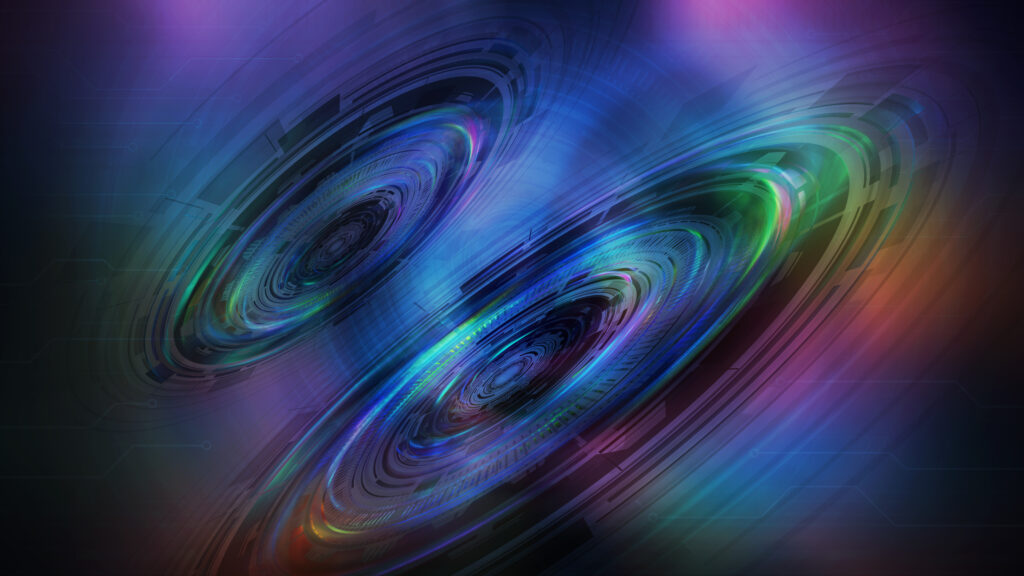
Wormholes and the concept of a multiverse introduce us to a mind-bending reality where interconnected parallel universes exist. These phenomena challenge our understanding of the universe and invite us to explore the infinite possibilities that lie beyond our known realm. Let’s delve into the depths of these fascinating concepts and uncover the implications they hold for the existence of alternate versions of ourselves.
First, let’s understand what wormholes are. Wormholes are theoretical tunnels in spacetime that connect different points in the universe, potentially allowing for interdimensional travel. They are a fascinating concept that has captured the imagination of scientists and science fiction enthusiasts alike. Wormholes open up the possibility of traversing vast distances on a cosmic scale and provide a potential means for exploring other parallel universes.
Combined with the concept of a multiverse, where multiple universes coexist, wormholes offer a gateway to interconnected realities. The multiverse theory suggests that there are countless universes, each with its own set of physical laws, constants, and possibilities. These parallel universes may have subtle or dramatic differences from our own, creating infinite variations of existence.
Imagine a network of interconnected realities, each branching off into different possibilities. It’s like an intricately woven tapestry of universes, where every choice and outcome manifests as a separate reality. In one universe, you may have made a different decision and ended up on a completely different path. In another, you may exist in a parallel version of yourself, leading a life that closely mirrors your own.
The existence of wormholes and the multiverse opens up a realm of endless discovery and reflection. It ignites our curiosity and forces us to contemplate the nature of our reality. Are we truly alone, or do myriad versions of ourselves exist in other dimensions? The possibilities are as vast as the cosmos itself.
“Wormholes and the multiverse reveal the interconnectedness of all things and the boundless potential that lies beyond our perception. They challenge us to expand our minds and embrace the mysteries of the universe.”
The Implications of Wormholes and the Multiverse:
- Interconnectedness: Wormholes and the multiverse suggest that everything is interconnected, transcending space and time. They point to a deeper unity and harmony within the cosmic fabric.
- Alternate Realities: The existence of parallel universes raises intriguing questions about the similarities and differences between alternate versions of ourselves. How much do our choices shape our reality, and what factors contribute to the emergence of alternate realities?
- Expanded Exploration: Wormholes could potentially serve as portals for exploration, allowing us to venture into other universes and learn from their unique attributes. This could revolutionize our understanding of physics, cosmology, and the nature of existence itself.
| Wormholes and Multiverse | Implications |
|---|---|
| Interconnectedness | Revealing the underlying unity of the cosmos |
| Alternate Realities | Questioning the influence of choices and the emergence of parallel versions of ourselves |
| Expanded Exploration | Potential for interdimensional travel and unlocking new knowledge |
Parallel Versions of You
Have you ever wondered if there are parallel versions of ourselves? The concept of parallel universes opens up a realm of infinite possibilities where alternate selves exist. These parallel versions of ourselves may share similarities with who we are, but they also diverge in numerous ways, influenced by the impact of choices and chance.
When considering the existence of parallel versions, we are confronted with the intriguing notion that there could be another version of us walking a different path, making different decisions, and experiencing a wholly separate reality. While the idea might seem like a fanciful concept, it raises profound questions about the nature of our existence and the interplay of chance and choice in shaping our lives.
Let’s explore the potential similarities and differences between these parallel versions. While we may share core characteristics and personality traits, the pathways and circumstances of our lives can create distinct narratives. It’s through exploring these variations that we gain a deeper understanding of the intricacies of human experience and the vastness of the universe.
Similarities Among Parallel Versions
- Shared physical attributes and genetic makeup
- Similar upbringing and background
- Common interests and passions
- Universal human emotions and experiences
Differences Among Parallel Versions
- Varied career paths and life choices
- Different relationships and social networks
- Distinct personal achievements and milestones
- Unique challenges and adversities
“In the quantum multiverse, every choice, every decision you’ve ever and never made exists in an unimaginably vast ensemble of parallel universes.” – Brian Greene
Just as each individual possesses their own unique reality, parallel versions of ourselves exist within their own separate realms. The existence of these alternate selves highlights the infinite possibilities that exist beyond our immediate perception.
So, as we ponder the existence of parallel versions, we are reminded of the boundless nature of the universe and the ongoing exploration to unravel its mysteries.
Mirror Worlds and Mirror Reflections
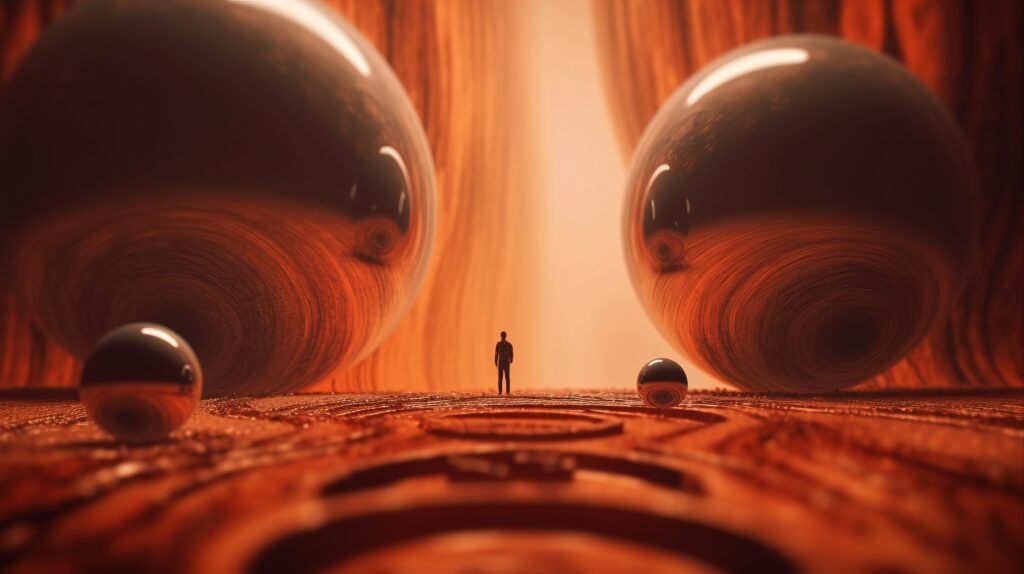
When we think about parallel universes, mirror worlds and mirror reflections come to mind as quintessential examples. These concepts allude to the idea that there might be alternate realities that closely resemble our own, like a reflection in a mirror. In this section, we will delve deeper into these intriguing parallel reflections of reality, contemplating the profound connections they may hold to our own experiences.
In mirror worlds, everything appears strikingly similar to our own reality, yet with subtle divergences that can challenge our perception of what is real. Just as a mirror reflects our image, mirror worlds provide a glimpse into a universe that shares remarkable similarities to our own. The repetition of familiar landscapes, people, and events can be both fascinating and disconcerting.
Imagine walking through a mirror and finding yourself in a world where everything seems almost identical, yet slightly altered. The people you encounter may have different personalities, hobbies, or life trajectories, but they still bear a striking resemblance to those you know. It is as if you are meeting an alternate version of yourself, living a parallel life in this mirrored reality.
Through the phenomenon of mirror reflections, we are confronted with the notion that our experiences could be mirrored in another realm. Our joys, sorrows, triumphs, and failures may find their echoes in these parallel universes. It poses the question: Are these mirror reflections of ourselves merely coincidental, or are they intricately connected to the experiences we perceive in our own reality?
“In the mirror, we find a reflection of our own existence, but in parallel worlds, we discover mirrored experiences that unveil the interconnectedness of our lives.”
Exploring mirror worlds and mirror reflections challenges us to reconsider the boundaries of our existence and question the nature of reality itself. They prompt us to contemplate the infinite possibilities and complexities that may lie beyond our familiar realm.
Cosmic Coincidences and Déjà Vu
Have you ever experienced a cosmic coincidence or had a moment of déjà vu that sent chills down your spine? These uncanny occurrences often leave us questioning the fabric of reality and wondering if there are parallel universes at play. The intriguing nature of cosmic coincidences and déjà vu experiences raises profound questions about the interconnectedness of our lives and the existence of parallel experiences.
Cosmic coincidences can take many forms. It could be a serendipitous encounter with someone who shares your exact name and birthday, or stumbling upon a long-lost childhood toy in an unexpected place. These seemingly random events defy explanation and leave us contemplating the mysterious workings of the universe.
“Coincidences are not accidents but signals from the universe, guiding us towards our true path” – Deepak Chopra
Déjà vu, on the other hand, is a phenomenon that many of us have experienced at least once in our lives. The feeling that we have already lived a particular moment, visited a specific place, or engaged in a specific conversation can be both exhilarating and disconcerting. In those instances, it’s as if we catch a glimpse of an alternate reality overlapping with our own.
These cosmic coincidences and déjà vu experiences hint at the existence of parallel universes, where our lives may unfold in different ways and our actions have divergent outcomes. They challenge our conventional understanding of time, space, and causality, urging us to consider the possibility of parallel experiences that exist alongside our own.
While scientists continue to explore the nature of these phenomena and search for concrete evidence of parallel universes, these cosmic coincidences and déjà vu experiences remind us of the vast mysteries that surround us. They invite us to embrace the unknown and ponder the interconnectedness of all things, leaving us with a sense of wonder about the infinite possibilities that may lie beyond our own reality.
Exploring the Multiverse Theory
The multiverse theory, often tied to string theory, proposes a mind-boggling concept – the existence of a vast cosmic ensemble of parallel universes. This theory takes us beyond the boundaries of our known reality and opens up a world of infinite possibilities.
At the heart of the multiverse theory is the idea that our universe is just one among countless others, each with its own unique set of physical laws, constants, and dimensions. These parallel universes may coexist alongside ours, each existing independently but influencing one another in subtle ways.
The multiverse theory finds its roots in string theory, which posits that fundamental particles are not point-like objects but rather tiny vibrating strings. These strings vibrate at different frequencies, creating distinct particles and forces in our universe. However, string theory also predicts the existence of additional spatial dimensions beyond the three we are familiar with, providing a potential gateway to parallel universes.
Imagine a cosmic tapestry, where each thread represents a different universe with its own set of laws and dimensions. These universes may overlap, interact, or remain entirely separate from each other, forming a vast and intricate multiverse.
“The multiverse is not just a theory, it is an elegant reality that offers a solution to the mysteries of our universe.” – Dr. Lisa Randall
Dimensions and Parallel Universes
To grasp the concept of parallel universes within the multiverse, we must consider the notion of multiple dimensions. In addition to our familiar three dimensions of space – length, width, and height – string theory suggests the existence of extra dimensions that are too small for us to perceive.
These hidden dimensions may be “curled up” or compactified, hiding within the fabric of space itself. Just as ants on a tightrope can only move forward and backward, unaware of the extra dimensions wrapped around them, we may be oblivious to the existence of additional spatial dimensions.
The intricate interplay between these extra dimensions and fundamental particles could give rise to a multitude of parallel universes. Each universe within the multiverse may have its own unique arrangement of dimensions, offering a diverse array of possibilities and realities.
The Many Faces of the Multiverse
Within the multiverse theory, there are several proposed types of parallel universes. Let’s explore some of the fascinating variations:
- Bubble Universes: In this scenario, bubble-like universes form and detach from one another within an ever-expanding cosmic landscape. Each bubble universe represents a distinct reality with its own physical laws.
- Membrane Universes: Also known as “braneworlds,” these universes exist on separate, parallel membranes that float within a higher-dimensional space. Each membrane can support its own set of physical laws and particles.
- Inflationary Universes: According to the theory of cosmic inflation, our universe underwent a rapid expansion shortly after the Big Bang. This process may have given rise to multiple “pocket” universes, each with its own unique properties.
While these are just a few of the proposed variations, they highlight the beautiful complexity and diversity present within the multiverse.
Understanding the Multiverse
The multiverse theory offers a framework for understanding the possibilities of other realms beyond our own. Although it may seem fantastical, this theory is grounded in rigorous scientific exploration and mathematical elegance.
By exploring the multiverse theory and unraveling the secrets of parallel universes, we embark on a journey of discovery that challenges our perception of reality. It forces us to contemplate the vastness of the cosmos and our place within it, igniting the spark of curiosity and inspiring us to inquire further into the mysteries of the universe.
| Type of Parallel Universe | Description |
|---|---|
| Bubble Universes | Bubble-like universes detach and exist independently within a cosmic landscape. |
| Membrane Universes | Universes exist on parallel membranes within a higher-dimensional space. |
| Inflationary Universes | Cosmic inflation gives rise to multiple “pocket” universes with unique properties. |
Otherworldly Encounters and Unexplained Phenomena

Throughout history, there have been accounts of otherworldly encounters and unexplained phenomena that have intrigued and baffled humanity. These inexplicable occurrences leave us questioning the boundaries of our reality and hint at the existence of parallel universes.
From ancient civilizations to modern times, tales of strange sightings, supernatural events, and paranormal experiences have fueled our fascination with the unknown. These stories often provide glimpses into realms beyond our comprehension, where the laws of physics and the fabric of reality may differ from our own.
“The most beautiful thing we can experience is the mysterious. It is the source of all true art and science.” – Albert Einstein
In our exploration of alternate realities, let’s consider a few intriguing examples:
- The Dyatlov Pass Incident: In 1959, a group of experienced hikers mysteriously died in the Ural Mountains. Their tent was found torn from the inside, and their bodies showed unusual injuries. Some speculate that their deaths were caused by an encounter with otherworldly forces or a rift in the fabric of reality.
- The Bermuda Triangle: This infamous stretch of ocean has been the site of numerous disappearances of ships and aircraft. While science points to natural phenomena and human error as explanations, the aura of mystery surrounding this region has led to theories of extraterrestrial activity or portals to parallel dimensions.
- UFO Sightings: Reports of unidentified flying objects have captivated the public for decades. Witness accounts of strange lights, erratic movements, and advanced technology have sparked speculation about otherworldly visitors traversing dimensions beyond our own.
These stories and countless others challenge our perceptions of reality and open our minds to the vast possibilities that exist beyond what we can comprehend. While skepticism and scientific inquiry play a crucial role in understanding the world around us, these unexplained phenomena remind us that there may always be mysteries that elude our comprehension.
| Parallel Universe Encounter | Description |
|---|---|
| Stan Romanek’s Alien Encounters | Stan Romanek claimed to have had multiple encounters with extraterrestrial beings and captured video footage of these encounters. His experiences, if true, provide compelling evidence for the existence of parallel universes inhabited by other civilizations. |
| Close Encounters at Rendlesham Forest | In 1980, several United States Air Force personnel witnessed a series of UFO sightings in Rendlesham Forest, England. The encounters involved interactions with intelligently controlled craft, leaving the witnesses convinced that they had entered into a parallel universe or interacted with extraterrestrial beings. |
| The Ghostly Phenomena of Borley Rectory | Borley Rectory, known as “The Most Haunted House in England,” was the site of numerous paranormal experiences. Reports of phantom footsteps, ghostly apparitions, and mysterious occurrences suggest a thin veil between our world and the realm of spirits. |
While skeptics may dismiss these experiences as mere illusions, the sheer multitude of accounts and the personal conviction of those who have encountered these phenomena cannot be easily brushed aside. They provide tantalizing hints of otherworldly encounters and glimpses into parallel universes that continue to intrigue the curious and challenge our understanding of reality.
The Influence of Literature and Pop Culture
The concept of parallel universes has not only captivated the scientific community but has also found its way into the realms of literature and pop culture. Authors, filmmakers, and artists have embraced this intriguing concept, weaving it into their works and shaping our perceptions of parallel realities.
In literature, parallel universes have been a recurring theme, allowing authors to explore the endless possibilities and challenge the boundaries of reality. From classics like Lewis Carroll’s “Alice’s Adventures in Wonderland” to modern masterpieces like Philip Pullman’s “His Dark Materials” trilogy, the idea of alternate realms has ignited the imagination of readers worldwide.
“The fault, dear Brutus, is not in our stars, but in ourselves.”
William Shakespeare, Julius Caesar
Indeed, the influence of parallel universes extends beyond the written word. In the world of film and television, this concept has been brought to life in various ways, captivating audiences and sparking discussions. From mind-bending films like “Inception” and “The Matrix” to popular TV shows like “Stranger Things,” parallel universes have become a rich source of storytelling and intrigue.
In the realm of art, parallel universes offer a canvas for exploration and reflection. Artists, such as Salvador Dalí with his surrealist works, have dived into the depths of the imagination, creating visual representations of alternate realities that blur the line between the possible and the impossible.
This confluence of literature, pop culture, and parallel universes has had a profound impact on our collective consciousness. It has pushed the boundaries of our imagination and challenged our understanding of reality itself. Through engaging stories, thought-provoking films, and captivating artworks, the concept of parallel universes has become ingrained in our cultural landscape.
Bibliography
| Author | Title | Year |
|---|---|---|
| Lewis Carroll | Alice’s Adventures in Wonderland | 1865 |
| Philip Pullman | His Dark Materials trilogy | 1995-2000 |
| William Shakespeare | Julius Caesar | 1599 |
Breaking the Boundaries of Reality
As we near the end of our exploration, we find ourselves contemplating the profound implications of parallel universes. The mere concept of parallel universes invites us to question the limitations of our own reality and opens the door to a boundless realm of infinite possibilities.
Breaking the boundaries of reality allows us to expand our consciousness and venture into uncharted territories of existence. It challenges us to seek alternate perspectives and question the very fabric of our understanding.
“There are things known and there are things unknown, and in between are the doors of perception.” – Aldous Huxley
By embracing the existence of parallel universes, we are compelled to ponder the interconnectedness of all things and the vastness of the cosmos. It broadens our horizons, enabling us to perceive the world from diverse angles and appreciate the intricacies of our own reality.
Expanding our consciousness through the exploration of parallel universes not only ignites our curiosity but also promotes personal growth and enlightenment. It encourages us to question societal norms and challenge the status quo, paving the way for innovation and groundbreaking discoveries.
In the words of Carl Sagan, “Somewhere, something incredible is waiting to be known.” Parallel universes offer us a glimpse into these wonders, prompting us to continue pushing the boundaries of knowledge and striving for a deeper understanding of our existence.
| Benefits of Breaking the Boundaries | Impact on Consciousness |
|---|---|
| Expands our perspective | Encourages open-mindedness |
| Fosters creativity and imagination | Challenges belief systems |
| Sparks scientific inquiry | Propels personal growth |
| Enables us to question reality | Promotes empathy and understanding |
As we conclude our exploration of parallel universes, let us embrace the vastness of the unknown and the transformative power of expanding our consciousness. By venturing beyond our comfort zones and embracing alternate perspectives, we unlock the limitless potential of the human mind and embark on a journey of self-discovery.
Embracing the Mystery and Expanding Our Worldview
As we reach the final section of our exploration into parallel universes, it is an opportune moment to reflect on the profound impact that contemplating the unknown can have on our lives. Embracing the mystery of parallel universes opens us up to a world of endless possibilities, allowing us to expand our worldview and challenge the limitations of our current understanding.
By contemplating the unknown, we embark on a journey of discovery, where our perceptions of reality become fluid and flexible. We begin to question the boundaries that confine us, daring to envision a reality where parallel versions of ourselves coexist and interact with one another. This exploration widens our perspective and encourages us to seek new knowledge and experiences beyond the confines of our current understanding.
Contemplating the existence of other realms expands our consciousness and reminds us of the profound interconnectedness of the universe. It reminds us that we are part of something much greater than ourselves and invites us to consider the infinite possibilities that lie beyond our immediate reality. As we embrace the mystery of parallel universes, we are inspired to explore, create, and connect in ways we never thought possible.
So, let us embark on this journey together, as we open our minds to the mysteries that surround us. By expanding our worldview and contemplating the unknown, we ignite a spark within ourselves to continuously seek knowledge, challenge conventions, and embrace the beauty of the vast and enigmatic cosmos we inhabit.




